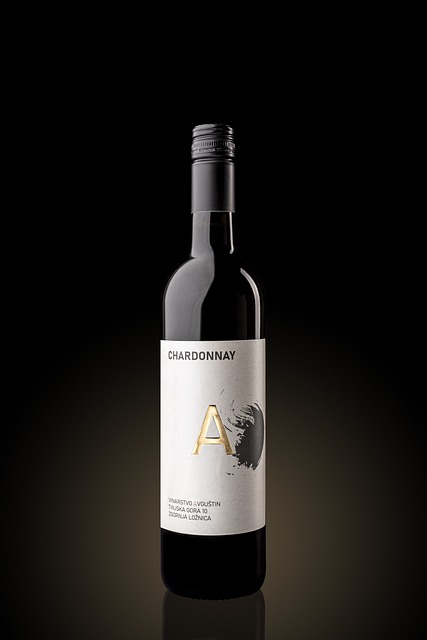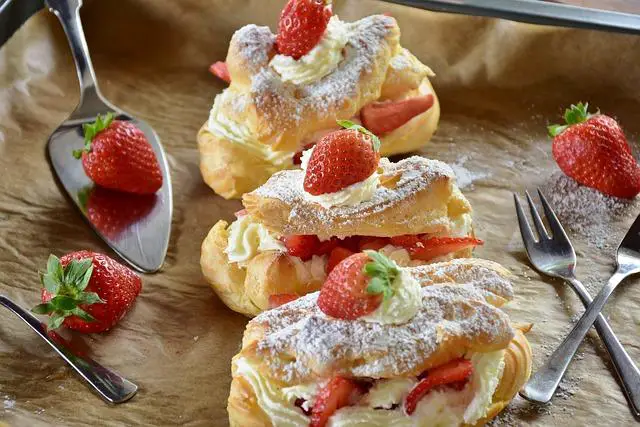Do you find yourself pondering over the question, “Should I stir my wine during primary fermentation?” If you’re a budding winemaker or just an enthusiastic wine lover, this query might have crossed your mind more than once. Fear not, for we’ve got you covered! In this article, we’ll delve into the world of winemaking and bring you valuable tips on whether it’s beneficial to stir your wine during primary fermentation. Drawing from our expertise, we’ll shed light on the pros and cons, while highlighting the crucial factors to consider. So, grab a glass of your favorite vintage, sit back, and let’s uncork the secrets of winemaking together!
Obsah
- 1. The Role of Stirring in Primary Fermentation: Unveiling the Benefits
- 2. Understanding the Science Behind Stirring Wine During Primary Fermentation
- 3. Guidelines for Stirring Wine: Timing, Frequency, and Intensity
- 4. Assessing Your Wine Prior to Stirring: Key Factors to Consider
- 5. Expert Recommendations: When and How to Stir Your Wine in Primary Fermentation
- 6. Common Misconceptions about Stirring Wine: Debunking Myths and Clarifying Facts
- 7. Troubleshooting: What to Do If You Experience Issues with Stirring Wine
- 8. Maximizing Flavor and Aroma Development: Stirring Techniques for Stellar Wine
1. The Role of Stirring in Primary Fermentation: Unveiling the Benefits
When it comes to primary fermentation, stirring plays a critical role in enhancing the overall process and unlocking a range of amazing benefits. By gently agitating the fermenting mixture, stirring ensures a more homogenous distribution of yeast, nutrients, and dissolved gases throughout the vessel. This aids in the acceleration of fermentation, resulting in a more efficient and consistent conversion of sugars into alcohol.
So, what specific benefits does stirring bring to the table? Let’s take a closer look:
- Promotes yeast health: Consistent stirring prevents the formation of localized dead zones within the fermentation vessel, allowing yeast cells to access a steady supply of nutrients. This ensures their viability and robustness, leading to increased fermentation activity and higher alcohol yields.
- Enhances flavor development: Through efficient stirring, the release and dispersal of various compounds, such as esters and volatile aromatics, are facilitated. This optimizes the flavor profile of the final product, resulting in a more complex and balanced taste.
- Improves temperature control: Stirring helps to evenly distribute heat produced during the fermentation process. This prevents temperature variations within the vessel, ensuring a consistent environment for yeast activity, reducing the risk of off-flavors, and aiding in the prevention of stuck fermentation.
By incorporating regular stirring into your primary fermentation routine, you can optimize the fermentation process and ultimately craft higher quality beverages. This straightforward technique can be easily implemented into your brewing practices, providing you with greater control over flavor development and overall product consistency. So, grab that stirring rod and unlock the full potential of your fermentation!
2. Understanding the Science Behind Stirring Wine During Primary Fermentation
During primary fermentation, the process of stirring wine plays a crucial role in achieving a high-quality end product. Understanding the science behind this practice will not only enhance your winemaking skills but also allow you to optimize flavor development and improve overall consistency.
Stirring wine introduces oxygen into the fermentation vessel, promoting yeast activity and aiding in the release of carbon dioxide. This essential gas not only creates the characteristic bubbles in sparkling wines but also helps in controlling excessive foaming during fermentation. By stirring the wine gently, you can also prevent the formation of a dense yeast cap, which could hinder efficient fermentation and lead to off-flavors. Furthermore, regular stirring facilitates homogenization of temperature and nutrients within the vessel, ensuring that every grape receives an equal opportunity to contribute its unique flavors to the final blend.
- Enhanced yeast activity: Stirring encourages increased yeast activity by introducing oxygen, facilitating a more efficient fermentation process.
- Controlled foaming: By promoting the release of carbon dioxide, stirring wine helps prevent excessive foaming during fermentation, reducing the risk of overflow or contamination.
- Avoidance of off-flavors: Gentle stirring minimizes the formation of a dense yeast cap, preventing the development of off-flavors that can arise from poor fermentation conditions.
- Homogenization of temperature and nutrients: Regular stirring ensures that all grapes receive equal exposure to temperature and nutrients, guaranteeing a harmonious blend of flavors in the final product.
Now that you understand the science behind stirring wine during primary fermentation, you are well-equipped to fine-tune your winemaking process and achieve exceptional results. Incorporating this practice will undoubtedly elevate the quality of your wines, making each bottle a delight to savor and share.
3. Guidelines for Stirring Wine: Timing, Frequency, and Intensity
Stirring wine is an essential step in the winemaking process as it helps to enhance flavors, aerate the wine, and achieve optimal balance. To ensure you stir your wine effectively, here are some guidelines to keep in mind:
- Timing: It is important to stir your wine at the right time to maximize its potential. Generally, stirring should be done during fermentation, and again during aging, although the exact timing may vary depending on the specific wine being made. During fermentation, stirring promotes yeast and bacteria activity, aiding in the extraction of desirable compounds. During aging, stirring helps to integrate flavors and improve mouthfeel.
- Frequency: How often you should stir your wine depends on the stage of the winemaking process. During fermentation, stirring is typically done daily or every other day to ensure uniform temperature and yeast distribution. During aging, stirring is typically done less frequently, approximately once a week or less, to avoid overexposure to oxygen and delicate flavors being stripped away.
- Intensity: The intensity of stirring is crucial to prevent oxidation and maintain wine quality. Use a gentle hand when stirring by utilizing a long stirring rod or a wine-specific lees stirrer. Avoid vigorous stirring, as it can lead to excessive oxygen exposure and diminish the wine’s aromatic complexity.
Remember, mastering the art of stirring wine takes practice and attention to detail. By following these guidelines on timing, frequency, and intensity, you can ensure your wine’s flavor profile develops harmoniously, resulting in a truly delightful tasting experience.
4. Assessing Your Wine Prior to Stirring: Key Factors to Consider
Appearance:
Before stirring your wine, it is important to assess its appearance. Take note of the color and clarity of the wine, as they can provide valuable insights into its quality and age. A younger wine typically has a vibrant and intense hue, while an older one tends to have a more brick-like shade. Clarity is also crucial: a clear wine indicates good filtration and careful production.
Next, observe the legs or tears that form on the inside of the glass. The presence of thick, slow-moving legs usually indicates a higher alcohol content. On the other hand, thin and quickly dissipating legs suggest a lighter-bodied wine. Assessing the appearance of your wine is an essential step in understanding its potential for flavor and complexity.
Aroma and Bouquet:
Another important factor to consider before stirring your wine is its aroma and bouquet. Swirling the wine gently in the glass will help release its fragrances. Take a moment to inhale and identify the various scents present. Aromas can range from fruity and floral to earthy and spicy. Pay attention to the intensity and complexity of the aromas, as they can indicate the level of maturity and quality of the wine.
Furthermore, the bouquet refers to the overall smell of the wine, which develops as it ages. It is influenced by factors such as grape varietal, winemaking techniques, and the aging process. By assessing the aroma and bouquet of your wine, you can gain valuable insights into its unique characteristics and make more informed decisions when it comes to stirring and enjoying it.
5. Expert Recommendations: When and How to Stir Your Wine in Primary Fermentation
When it comes to primary fermentation, the topic of stirring your wine can often be a bit controversial. Some winemakers believe that stirring can help improve the extraction of flavors and aromas, while others argue that it can introduce too much oxygen into the fermenting wine, leading to off-flavors and spoilage. Here are some expert recommendations on when and how to stir your wine in primary fermentation:
1. Timing is everything: It’s important to stir your wine at just the right time. This is typically done during the first few days of fermentation when the yeast is actively converting sugar into alcohol. Stirring too early or too late can have negative effects on the final product.
2. Gentle swirling: Rather than vigorously stirring, opt for a gentle swirling motion. This helps evenly distribute the yeast and other sediments, promoting a more consistent fermentation process. Avoid splashing or introducing excessive air, as this can lead to oxidation and spoilage.
Remember, every wine and fermentation process is unique, so it’s essential to follow your recipe or consult with an experienced winemaker for specific guidelines. By understanding when and how to stir your wine in primary fermentation, you can enhance the overall quality and flavor profile of your homemade wine.
6. Common Misconceptions about Stirring Wine: Debunking Myths and Clarifying Facts
Stirring wine is often surrounded by many misconceptions, which can leave wine enthusiasts perplexed. Let’s set the record straight and debunk a few of these common myths to clarify the facts.
Myth 1: Stirring wine accelerates oxidation. Contrary to popular belief, stirring wine does not accelerate oxidation. In fact, gentle stirring can actually help expose the wine to oxygen, enhancing its flavors and aromas. While over-stirring can lead to excessive oxidation, a controlled and measured approach can be beneficial to the overall wine experience.
Myth 2: Stirring wine always results in sediment dispersion. While stirring can agitate sediments in some wines, it doesn’t always lead to their dispersion. In fact, certain wines benefit from gentle stirring as it helps to incorporate the sediments into the wine, creating a richer and more complex character. However, it’s essential to exercise caution and consider the specific wine varietal and age before deciding to stir.
- Fact 1: Stirring wine can enhance its flavors and aromas when done correctly.
- Fact 2: Over-stirring can lead to excessive oxidation, so it’s crucial to exercise moderation.
- Fact 3: Sediment dispersion during stirring depends on the wine varietal and age.
- Fact 4: Gentle stirring can help incorporate sediments, resulting in a more complex character.
By dispelling these and other myths surrounding stirring wine, we hope to encourage wine enthusiasts to explore the art of stirring and its potential benefits. Remember, knowledge and understanding are key when it comes to enhancing our wine experiences.
7. Troubleshooting: What to Do If You Experience Issues with Stirring Wine
While stirring wine may seem like a simple task, there can be instances where certain issues may arise. Don’t worry, though! With a few troubleshooting tips, you’ll be able to overcome these obstacles and ensure a perfectly stirred glass of wine.
1. Difficulty in Stirring:
- Check the size of your stirring utensil. Make sure it’s appropriate for the size of the glass or decanter.
- Ensure that you’re using the correct technique. Hold the handle firmly and gently rotate the spoon or stirrer in a clockwise motion.
- If you’re still facing difficulty, try pouring the wine into a wider glass or decanter. This will provide more space for stirring and make the process easier.
2. Excessive Bubbles or Foam:
- Allow the wine to settle for a few minutes after pouring. This will help reduce any initial release of carbon dioxide, which can cause excessive bubbles or foam.
- Try stirring the wine more slowly and gently to minimize agitation and reduce the formation of bubbles.
- If the issue persists, you might be dealing with an excessively carbonated wine. In this case, it’s best to let the wine sit for a longer period of time to allow the bubbles to dissipate before stirring.
Remember, troubleshooting these issues is all part of the wine-stirring journey. By following these simple tips, you’ll be able to overcome any obstacles and enjoy the perfect glass of stirred wine. Cheers!
8. Maximizing Flavor and Aroma Development: Stirring Techniques for Stellar Wine
When it comes to crafting a truly exceptional wine, flavor and aroma development are paramount. To ensure your wine reaches its full potential in these aspects, employing the right stirring techniques can make all the difference. Here are some tried-and-true methods to bring out the best in your wine:
- Lees Stirring: This technique involves gently stirring the wine to agitate the lees, which are the residual sediments left after fermentation. By stirring the lees, you encourage contact with the wine, enhancing complexity and contributing to a richer mouthfeel.
- Batonnage: Commonly used in the production of white wines, batonnage refers to the process of stirring the wine while it ages on its lees. This technique helps to extract flavor and aroma compounds from the lees, resulting in a more expressive and layered wine.
- Punching Down: Primarily used in red wine production, punching down involves manually pushing the grape skins that float to the top of the fermenting juice back down into the liquid. This technique optimizes color extraction, tannin development, and promotes a more robust flavor profile.
By utilizing these stirring techniques, vintners can elevate their wines to new heights, ensuring an extraordinary sensory experience for wine enthusiasts. However, it is crucial to remember that moderation is key. Over-stirring or using excessively aggressive techniques can lead to undesirable outcomes, such as excess bitterness or muted flavors. With the right balance and finesse, these stirring methods can unlock the full potential of your wine, resulting in a stellar finished product.
So, the next time you embark on your winemaking journey, don’t overlook the power of stirring techniques. Incorporate these methods into your process, and watch as the flavors and aromas of your wine flourish, captivating the palates of those fortunate enough to indulge.
In conclusion, stirring your wine during primary fermentation can enhance the extraction of flavors and improve the overall quality.










